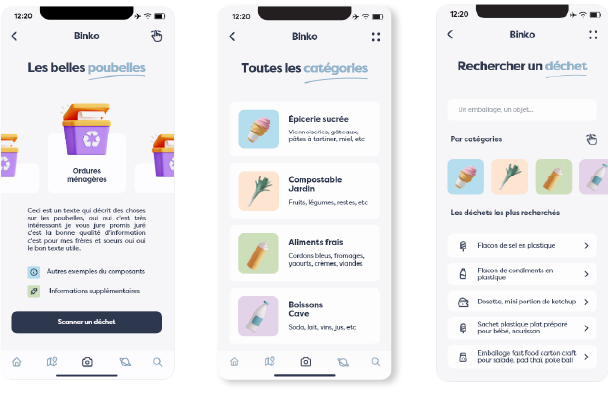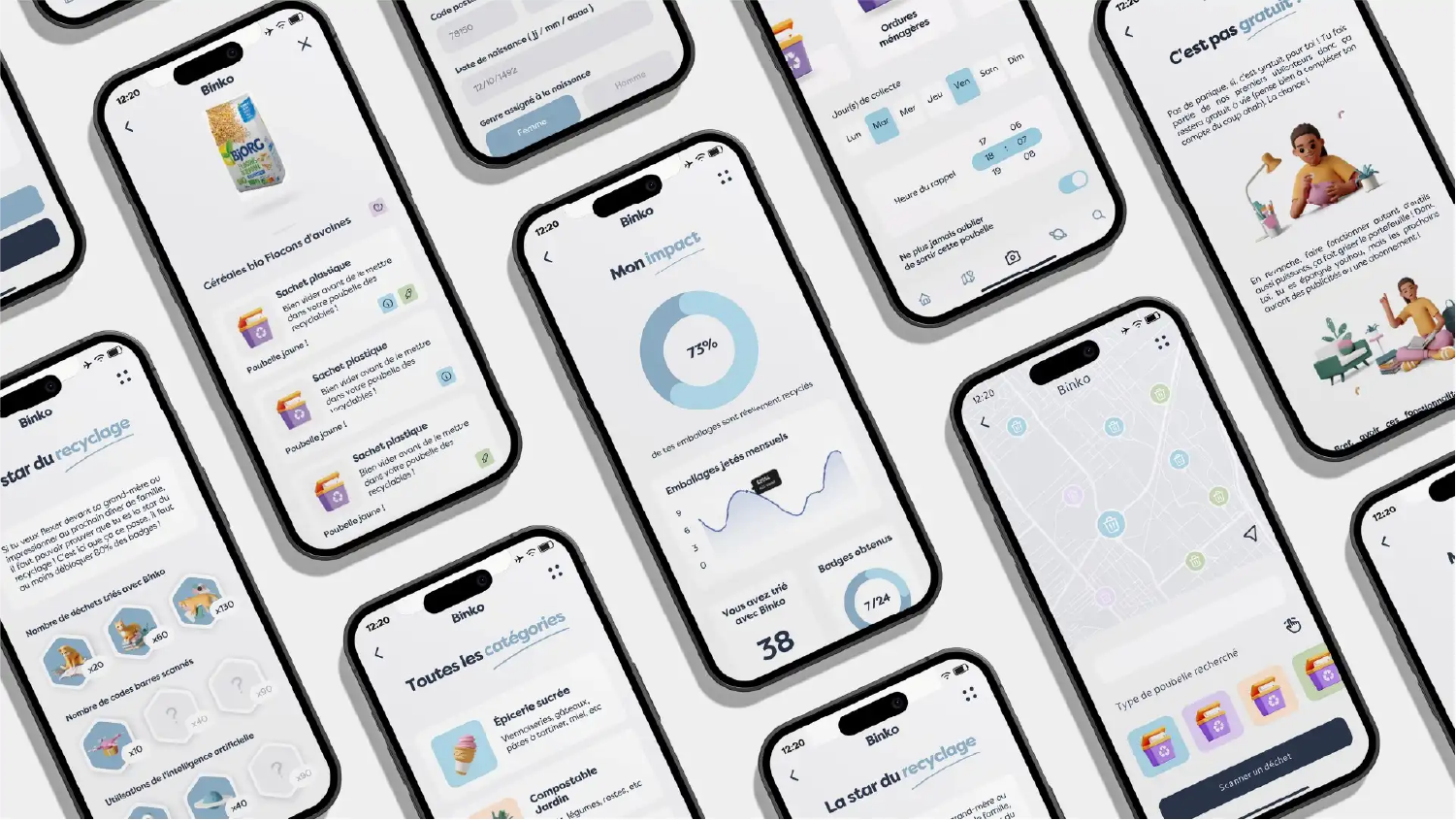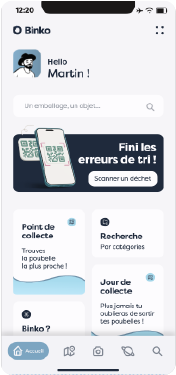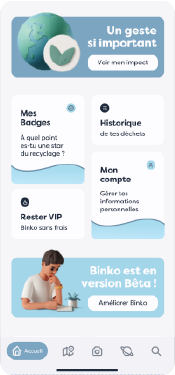🏡 Machine Learning 55% of people sort their waste
🏡 Machine Learning 55% of people sort their waste
In France, only about 55% of people sort their waste, and even then, the sorting is often done incorrectly. This leads to massive inefficiencies in recycling systems, higher processing costs, and an environmental burden that could be significantly reduced through better practices. At the core of the problem lies one question: how can we help people sort better without adding complexity to their lives?
🎨 Design Concept & Materials
User’s point of view Machine Learning
In France, only 55% of people sort and often the sorting is not well done. We want to offer everyone a tool that allows them to recognize any waste as quickly as possible and to give them the right gestures to make in order to maximize recycling afterwards by Machine Learning
We are creating a machine / trash can / bin that can recognize automatically any waste, crush it and sort it at source in one of the 6 on-board compartments. So, the waste recognition software must be efficient.
Key Materials Used:
The waste will be separated into parts For exemple a package of cereal we be decompose as :
compostable food residue
cardboard box (outside)
plastic packet

💡 Waste Collection
household garbage
packaging (not everybody)
compostable waste (not everybody)
vegetal waste Machine Learning
bulky items (Once a month)
🛠️ Execution & Implementation Stages
🧠 A Smart Bin That Sorts Waste for You
As a user, imagine a world where sorting waste is no longer your responsibility, but is done instantly and correctly by an intelligent machine. No more wondering, “Is this recyclable?” or “Should this go in compost or landfill?”
We’re building an automated smart trash bin — a device that uses advanced image recognition and material classification algorithms to identify, sort, and process waste on the spot. It’s not just a bin — it’s a full waste management system in one compact product
📸 Machine Learning Project Highlights
A stately salon room with hand-carved molding and classical sculpture centerpiece.
An open-plan kitchen and dining area featuring marble walls and teal floors.
A spiral staircase that adds architectural elegance and modern contrast.
Malaysia, blending opulence with timeless European elegance. The design concept was rooted in neo-classical architecture, enriched with modern touches and royal aesthetics, creating a harmonious balance between sophistication and comfort.
The project included a grand salon, dining space, and open-concept kitchen, seamlessly integrated to reflect both function and artistic flair. Using rich materials such as marble, gold accents, silk textiles, and velvet, we curated a space that embodies luxury living. Crystal chandeliers, sculpted wall moldings, and customized flooring patterns further enhanced the regal atmosphere design.
The color palette was carefully selected to evoke calm and prestige, with shades of emerald green, turquoise, gold, and ivory.
🤖 How It Works – Machine Learning at the Core
At the heart of this innovation is a Machine Learning model trained on thousands of waste item types. Users place any item into the bin. Cameras and sensors immediately scan and analyze the object, identifying:
- The type of material (plastic, cardboard, metal, food waste, etc.)
- The form (rigid, soft, liquid, packaging)
- Whether the item contains multiple layers or components (e.g. a cereal box)
Using this real-time data, the bin determines the correct sorting protocol. If the item is multi-material, it can even separate the components using mechanical functions and guide the parts to the appropriate compartment.
🔧 What Makes Our System Unique
- 6 onboard compartments, each designated for a specific type of waste: plastic, paper/cardboard, compostable food, glass, metal, and general waste
- Automated crushing mechanism to reduce waste volume, especially for bulky items like bottles or boxes
- Sensor array (visual + infrared) to detect food residue, organic waste, and contaminated recyclables
- A connected app interface that gives users insights about their waste habits and offers eco-friendly tips
♻️ Real Example: Sorting a Cereal Package
Let’s say you toss a used cereal package into the bin. Our system would:
- Scan the item and detect its components via camera and sensor data
- Separate the contents:
- Any leftover crumbs → directed to the compostable/food waste compartment
- Outer cardboard box → flattened and sorted to the paper/cardboard section
- Inner plastic bag → identified and crushed before being sorted to the plastic compartment
- Confirm sorting and show feedback on the screen or app
All of this is done automatically within seconds — no need for the user to think twice.
🌍 Why This Matters
Incorrect sorting leads to:
- Lower recycling rates
- Cross-contaminated materials
- Increased carbon emissions due to reprocessing
By empowering users with a system that removes the guesswork, we dramatically increase recycling accuracy. Over time, this technology could be implemented in homes, offices, public spaces, and even industrial settings — revolutionizing how we manage waste at the source.





